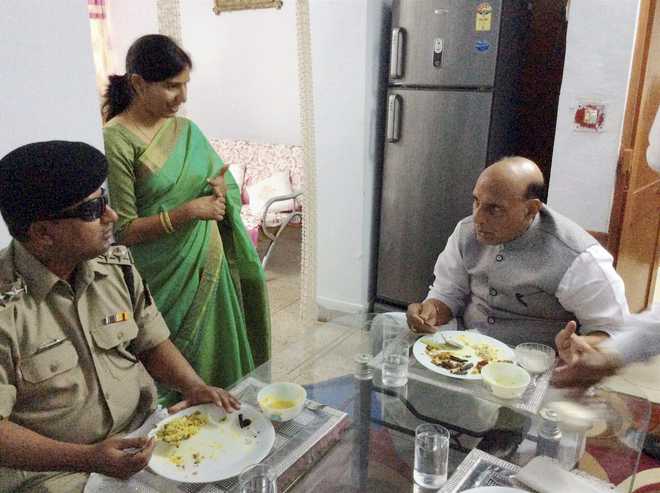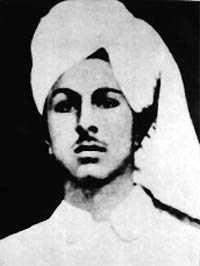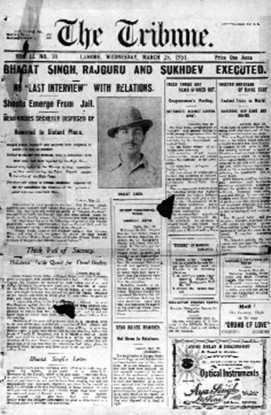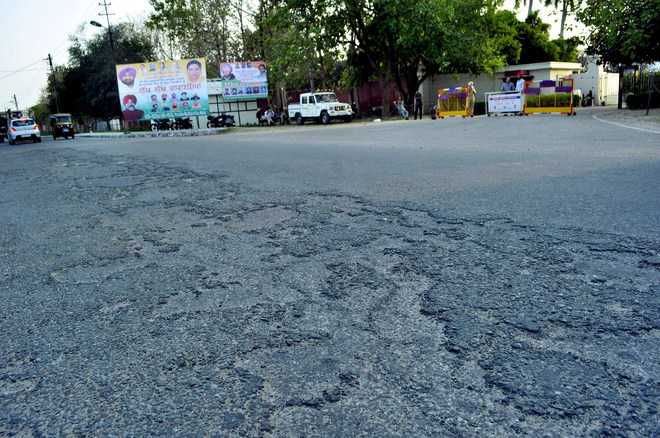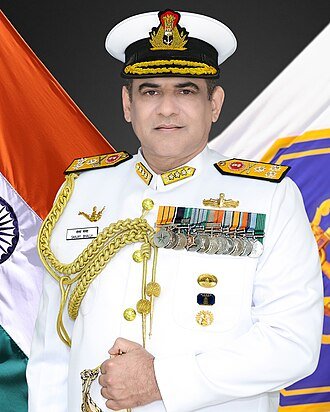
This is the second part of Colonel Shamsher Singh’s story, which began here.
Colonel Shamsher Singh was commissioned on July 16, 1941 into the 1 Patiala Rajindra Lancers, the horsed cavalry unit of Patiala State. He joined the unit at Loralai in Baluchistan where it was functioning under the Indian Army. The horsed cavalry units of the Indian Army were being mechanised at a rapid pace for World War II and being equipped with armoured cars. On special request of the Maharaja of Patiala, the Patiala Lancers were also selected for mechanisation in end-1941 and moved to Quetta for the same.
Shamsher’s leadership qualities had been noticed by Colonel Hillard, the British Commanding Officer of the unit. He selected Shamsher for technical courses on armoured cars at Armoured Fighting Vehicles School at Ahmednagar from January 1942 to April 1942.
Shamsher became the Technical Officer of his regiment and was responsible for its technical conversion to Armoured Cars. At the end of 1943, he was promoted to the rank of Major and became a Squadron Commander. After intensive training at Risalpur, the regiment moved to Khandwa, in present-day Madhya Pradesh, in early 1944. From Khandwa, Shamsher also attended advanced technical and tactical courses at Ahmednagar and Pune.
In early 1945, the Patiala Lancers moved to the Middle East, to guard the lines of communications and oil installations in Egypt and Palestine, and maintain peace between the Jews and the Arabs. Shamsher had a chance to watch the fledgling Jewish Army – Haganah – and its ethos and tactics left a deep impression on him. His unit also took part in suppression of the Arab rebellion in Aman. As part of his duty and on leave, Shamsher travelled extensively in the region. The regiment returned to India at the end of 1946 and Shamsher was transferred to 1 Patiala Rajindra Sikh Infantry (now 15 Punjab).
In September 1947, Shamsher received an unwritten informal order to use machine guns to fire on a refugee train going to Pakistan at Sirhind. Shamsher protested that the order was unethical and was an unlawful command. He was unfairly labelled as darpok (coward), an insult he swallowed, but firmly stood his ground. The order was cancelled.
On November 3, 1947, 1 Patiala was moved to Jammu to clear Pakistani raiders from Akhnoor-Chamb and Naushera Sectors. Shamsher was first given the task of bringing peace to the area of Ustad Ka Mohalla, where a large number of armed Muslims were besieged by mobs. Seeing the Indian Army, the mobs were emboldened and wanted to attack the locality to massacre the Muslims. True to his character, Shamsher stood firm and safely escorted the 30,000 Muslims to Sialkot, Pakistan.
Around this time, the situation in Naushera was deteriorating and raiders had besieged the town. Shamsher’s company was given the task of recapturing the Beripattan Ford/Ferry to open the way to Naushera. The ford/ferry was recaptured on November 11, 1947, to pave the way for the 50 Para Brigade to go through and save Naushera. However, to the rear, the enemy attacked and captured Chamb, cut off the road to Naushera and was threatening Akhnoor. To respond to this situation, 1 Patiala was rushed back to secure Akhnoor and recapture Chamb. The plan was to attack Chamb from Mandiala, which was to the north, with two companies on the morning of 11 December 1947.
Once again, Shamsher was at the forefront. His company was the right forward company in the attack. The attack was supported by a troop (three guns) of 11 Field Regiment under Major (later Major General) Lachman Singh Lehl. The attack is best described in the excerpt of his article written in 2010:
“Wireless silence having been broken, the CO assumed a tight control over the companies on the move towards Chhamb. The CO’s party, including my OP party reached Mandiala; the companies, advancing from Mandiala got involved in a firefight with the enemy in Chhamb. The CO ordered Major Shamsher Singh, the right Company Commander, to cut-off the enemy behind Chhamb village. Soon the company was held- up by heavy LMG and rifle fire and I was asked to engage the enemy. On seeing the first ranging (a process of bracketing fire of guns before sustained firing) round, Shamsher spoke excitedly on his wireless set in Punjabi, “Gola dushman di gichy te laga, isi jagah fire karo (the shell has hit the nape of the enemy, fire at the same spot)”. It was planned to bombard the objective for five minutes ‘On Call’ from Shamsher. On my suggestion, it was agreed that ‘a smoke shell be fired from one gun to indicate the end of fire’. As the fire started and the assault company moved forward under the artillery covering fire, the CO ordered his Second-in-Command to attack the enemy in Chhamb village with vigour and a bold use of the armoured cars from Palanwala direction. Some of the shells, on hitting the tree tops, produced an airburst effect over the enemy trenches and demoralised him. Soon a ‘Verey Light’ signal indicated the capture of the objective. I still remember the attack on Chhamb as ‘a model for a battalion in attack’ under effective control of the CO.”
On December 15, the Pakistanis organised a big Lashkar of 10,000 Pathans and Punjabi Musalmans from the area, supported by the regular Army, to recapture Chamb. The enemy was in high spirits and surrounded the defences of 1 Patiala. Shamsher’s company was the forward most and deployed on a high ground, in the vicinity of Chamb village. The Lashkar set fire to the crops and dry scrub. To frighten the besieged troops, the Lashkar danced the Ludi (a popular dance of Punjab akin to Bhangra). It was a macabre scene.
Such was the psychological impact that Brigadier Lakhinder Singh, Commander 268 Infantry Brigade, advised a withdrawal. There was panic all around. The Commanding Officer, who had once called Shamsher “darpok”, sought his views. Shamsher firmly refused and said, “Sir, we must stay put and fight. The enemy is all around us. If we attempt to withdraw, we will be routed and decimated. As this conversation was going on, the enemy closed up to the defences of Shamsher’s company. The frenzied enemy had entered some trenches and a number of close-quarter duels took place. Shamsher moved from trench to trench to control the battle. For the next one hour, the battle continued but Shamsher’s company carried the day. The attack was repulsed and Chamb had been saved.
Next morning, nearly 300 enemy dead were found around the defences. The Commanding Officer came to Shamsher and said, “Forgive me Shamsher, for doubting your bravery.” The horsed cavalry officer, who had mastered mechanised warfare, had now proved his mettle in the classic infantry battle both in attack and in defence.
Over the next one year, every senior officer sought Shamsher to be part of his command and he remained continuously in battle.
Soon, 1 Patiala was under Brigadier Usman at Naushera and was employed as a mobile reserve for trouble shooting and for keeping the road open from Jammu to Naushera. The enemy recaptured Jhangar on December 24, 1948, and was threatening Naushera. It had cut off the Jammu-Akhnoor-Naushera Road at a number of places.
To clear the enemy road blocks and set up posts that would protect the road, 1 Patiala moved on foot three times from Naushera to Akhnoor. So impressed was Brig Usman with 1 Patiala that he wrote to General Kulwant Singh, General Officer Commanding (GOC) Jammu and Kashmir (JAK) Division at Jammu, that he either wanted 1 Patiala or two more battalions if Jhangar was to be recaptured.
A two-brigade attack was launched on March 15, 1948 to recapture Jhangar: 19 Brigade advanced along the Northern Ridge and 50 Para Brigade along the Southern Ridge. Tanks and armoured cars of 7 CAV along with one infantry battalion advanced along the road in the valley. An excerpt from Brig Usman’s ( Commander 50 Para Brigade) order of the day, reproduced below, reflects the greatness of this soldier:
“The eyes of the world are on us. The hopes and aspirations of our countrymen are based upon our efforts. We must not falter, we must not fail them…..
To every man upon this earth Death Cometh soon or late
And how can man die better
Than facing fearful odds
For the ashes of his fathers
And the temples of his gods
… So forward friends, fearless we go to Jhangar. India expects everyone to do his duty.
Jai Hind.”
The main battle was fought on the Pir Thil feature overlooking Jhangar, which was attacked with 1 Patiala on the left and 3 Maratha (Para) on the right, on the night of March 16/17, 1948. The attack by 3 Maratha got stalled due to difficult terrain, but 1 Patiala spearheaded by Shamsher’s company, captured Pir Thil and rolled down to capture Jhangar on March 17, 1948.
On May 10, 1948, 1 Patiala was moved to Srinagar and given the task of defending Ziozila Pass at all costs and hold a firm base for the offensive to relieve Kargil and Leh. The Gilgit Scouts were simultaneously threatening Leh and Zozila. Shamsher was now the Second in Command of 1 Patiala. A task force of two companies was created and placed under his command to defend Zozila, while two companies were used to secure the line of communications, ie the Road Srinagar- Baltal.
The defence of Zozila was Shamsher’s finest hour. He took over as the Garrison Commander Zozila on May 19, 1948, and located himself at Gumri. One company was pushed forward to Machoi, which relieved a company of 5 J&K Infantry under Captain Rachpal Singh on May 23, 1948. On the same day, a platoon sent forward for reconnaissance in force towards Mateyan, was ambushed by the enemy and suffered 12 casualties, including the platoon commander.
Shamsher organised a counter attack and recaptured this area known as Island Feature. The attack was led by Major Mohinder Singh. A fierce battle took place. All dead bodies and wounded soldiers from the patrol were recovered. The enemy left behind 21 dead bodies. Our casualties were 17 killed and 10 wounded, including those of the patrol. The intensity of the battle can be gauged from the fact that one Maha Vir Chakra and six Vir Chakras were awarded for this operation.
Shamsher’s two companies were now stretched along track Zozila-Gumri-Machoi-Island in Section and Platoon Posts. The enemy infiltrated from the North and occupied higher hill features between the posts. No movement was possible during the day, but at night, troops were resupplied. But soon, due to overstretched positions and the enemy occupying higher features, casualties started mounting at the rate of two or three a day. No more troops were available. The two companies held this isolated sector against all odds for two and a half months. The enemy launched a number of attacks to dislodge the defenders and many small battles were fought. Shamsher, with a small reserve, was the troubleshooter, rushing to reinforce posts under attack. In these operations the enemy suffered 200 casualties. Shamsher recommended consolidation into a more compact defence closer to Zozila. GOC Srinagar Division General Thimaya reluctantly agreed.
On the night of August 1/2, 1948, the two-company Task Force under Shamsher occupied a more compact defended area on features dominating the Zozila Pass. Captain Amrinder Singh, in his book on decisive battles fought by the Indian Army (post-independence), wrote that the real hero of Zozila was Major Shamsher Singh who denied the pass to the enemy for five months against all odds and provided a firm base for launch of the offensive by 77 Para Brigade in end-October 1948.
In end October, 1 Patiala was relieved from the posts to form part of the offensive. On the night of October 31/ November 1, 1948, the attack led by Stuart tanks and armoured cars of 7 CAV and followed by 1 Patiala broke through the pass, watched by the awestruck enemy from heights overlooking the pass. Such was the psychological impact of this bold move that the enemy decamped and Gumri was recaptured by noon, and Machoi by morning of 2 November where a 3.7 Inch Howitzer Gun was captured. Then 4 Rajput led the advance upto Matayen but was held up there. The progress hereafter was slow. On the night of November 13/14, 1 Patiala crossed a four-feet deep, freezing river at Pindrass to bypass the enemy and made a dash at night for Drass, which was captured on the morning of November 14. Guru Nanak’s birthday was celebrated there on November 16. Dinner at 1 Patiala that night was attended by Major General Thimayya, Brigadier Atal and Lt Col (later Major General) Rajinder Singh ‘Sparrow’, Commanding Officer, 7 Cavalry.
Having been in operations continuously for one year, 1 Patiala was to be pulled back but Brigadier Atal, Commander 77 Para Brigade, requested for two companies of 1 Patiala under Major Shamsher Singh for the advance to Kargil. Shamsher led the advance up to the junction of Drass and Shingo Rivers, which was secured by November 23. Thereafter 1/5 Gorkha Rifles under Lt Col Mohinder Singh Pathania (later Major General and responsible for the debacle of 4 Infantry Division in 1962) resumed the advance, but got stuck at Harka Bahdur bridge, which had been burnt down by the enemy.
Brig Atal again sought his troubleshooter and Shamsher was called forward with one company of 1 Patiala. Brigadier Atal’s order was simple: “Shamsher, take me to Kargil.” Shamsher lived up to his reputation. One company of 1/5 Gorkha Rifles was also placed under the command of Shamsher. Avoiding the enemy in the valley, Shamsher climbed over the ridge to the south and surprised the enemy. Kargil was captured by him on November 30.
All readers are familiar with the Kargil War fought on the rugged High Altitude terrain in 1999. The terrain from Zozila to Kargil is similar in nature with heights varying from 11,500 feet up to 16,000 feet. Troops had no snow clothing and heating resources. Drass, which was captured by 1 Patiala on November 14, is notified as the second coldest place in the world. Until then, this was the highest battlefield in the world. Shamsher was part of each and every major operation in this area from May to November 1948. In fact, he spearheaded most of them.
Seeing my high altitude clothing when I was posted in Ladakh in 1988, he commented that he fought there in 1947-48 with no winter clothing. Nights were spent doing physical exercises to keep warm!
Despite having led his unit in all operations and his unit – 1 Patiala – getting eight Maha Vir Chakras and 17 Vir Chakras (including the Commanding Officer), Shamsher did not receive any bravery award. All his Commanders swore by him and recommended him, but somehow fate denied him a bravery award. Yet his enthusiasm for the mission in hand never flagged. He remained in battle continuous for 13 months and became a legend in his lifetime. Shamsher proved Napoleon’s maxim that “in war, it is not the ‘men’ that count, but the ‘man’ that counts”.
Without doubt, he was ‘the man’, a class apart, an exceptional soldier!
